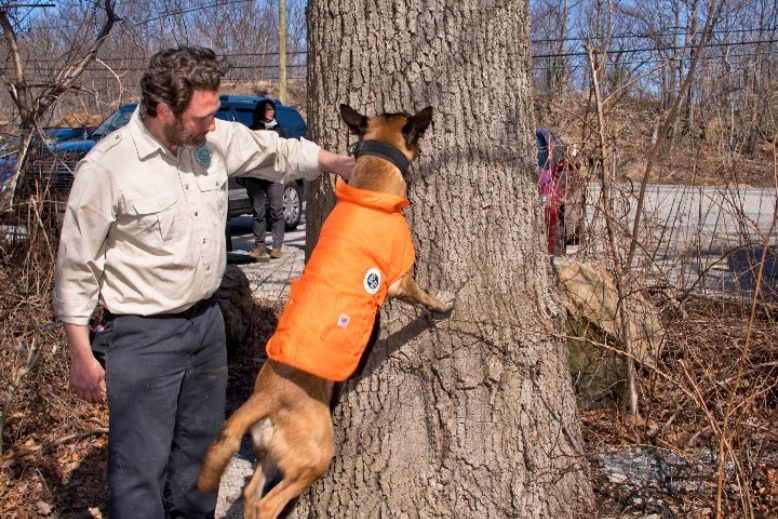
This is the story of a dog barking up the right tree.
Specifically, it’s a tale of two conservation dogs trained to sniff out oak wilt, a fungal disease that could threaten the 19 species of oak native to New Jersey. The disease is particularly aggressive in red oaks, including the northern red oak, New Jersey’s official state tree.
The two dogs—Dia, an American Labrador retriever, and Fagen, a Belgian Malinois—underwent a week of intensive training at Cornell University as part of the Oak Wilt Project, a partnership between the university and the Mahwah-based New York–New Jersey Trail Conference Conservation Dogs program. Joshua Beese, the dogs’ handler, and his assistant, Arden Blumenthal, accompanied Dia and Fagen for their training to upstate New York, where the fungus has been confirmed. It has yet to be detected in New Jersey.
“We want to keep it out of our region,” says Beese, who also trained the dogs to detect invasive plants and insects, including Scotch broom and spotted lanternfly.
[RELATED: Meet the Handful of Locals Rescuing Our State’s Threatened Trees]
Oak wilt moves from infected tree to healthy tree via sap-feeding beetles. The fungus attacks the smaller branches, then moves down the trunk to the roots, which graft with the healthy roots of nearby oaks, infecting them, too. “Typically, diseases take years to kill a tree,” says Karen Snover-Clift, director of the Plant Disease Diagnostic Clinic at Cornell. “But these are aggressive. Trees can go down as quickly as three weeks.”
If grades were given, Dia and Fagen would have received straight A’s. Working with cultures, the dogs detected the yeasty-smelling fungus above and below ground. “Dia got up on her hind legs and pointed with her nose at the fungus on the tip of a branch eight feet off the ground,” says Beese.
Humans have a role to play, too. Avoid pruning oaks in spring and summer, when the fungus and beetles are active, and don’t transport cut oak, which, if infected, can spread the fungus to healthy trees. You can support the training program with a donation at nynjtc.org.



